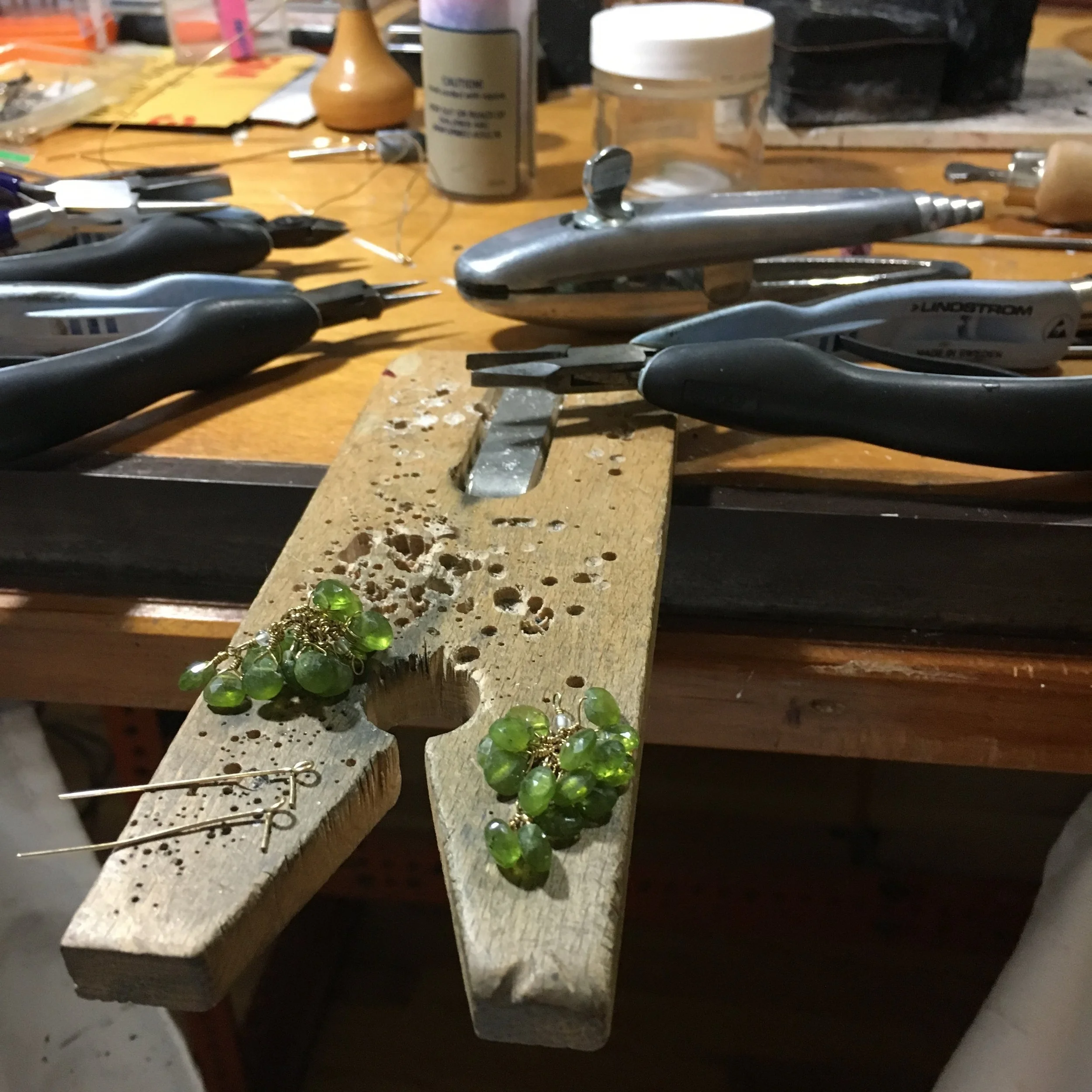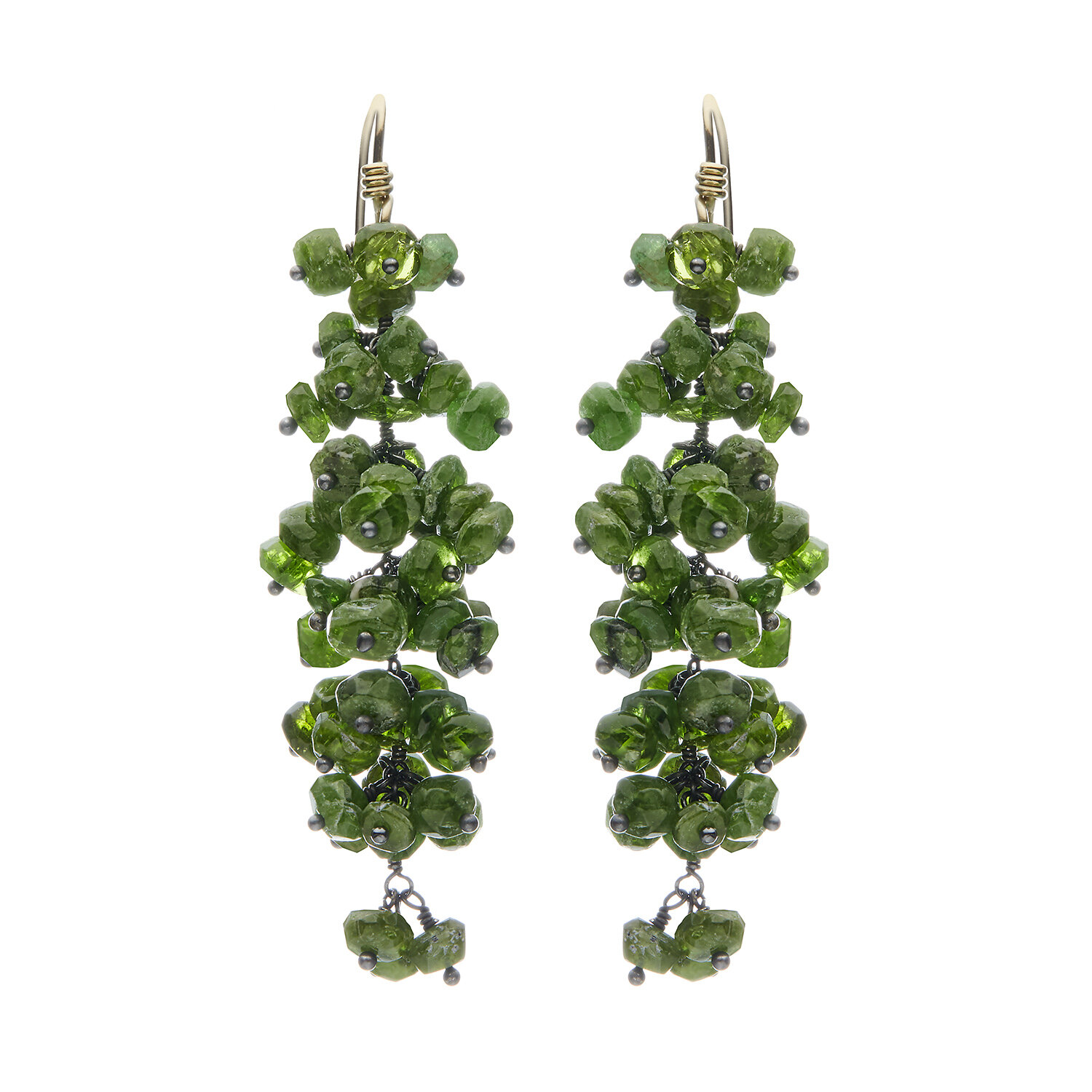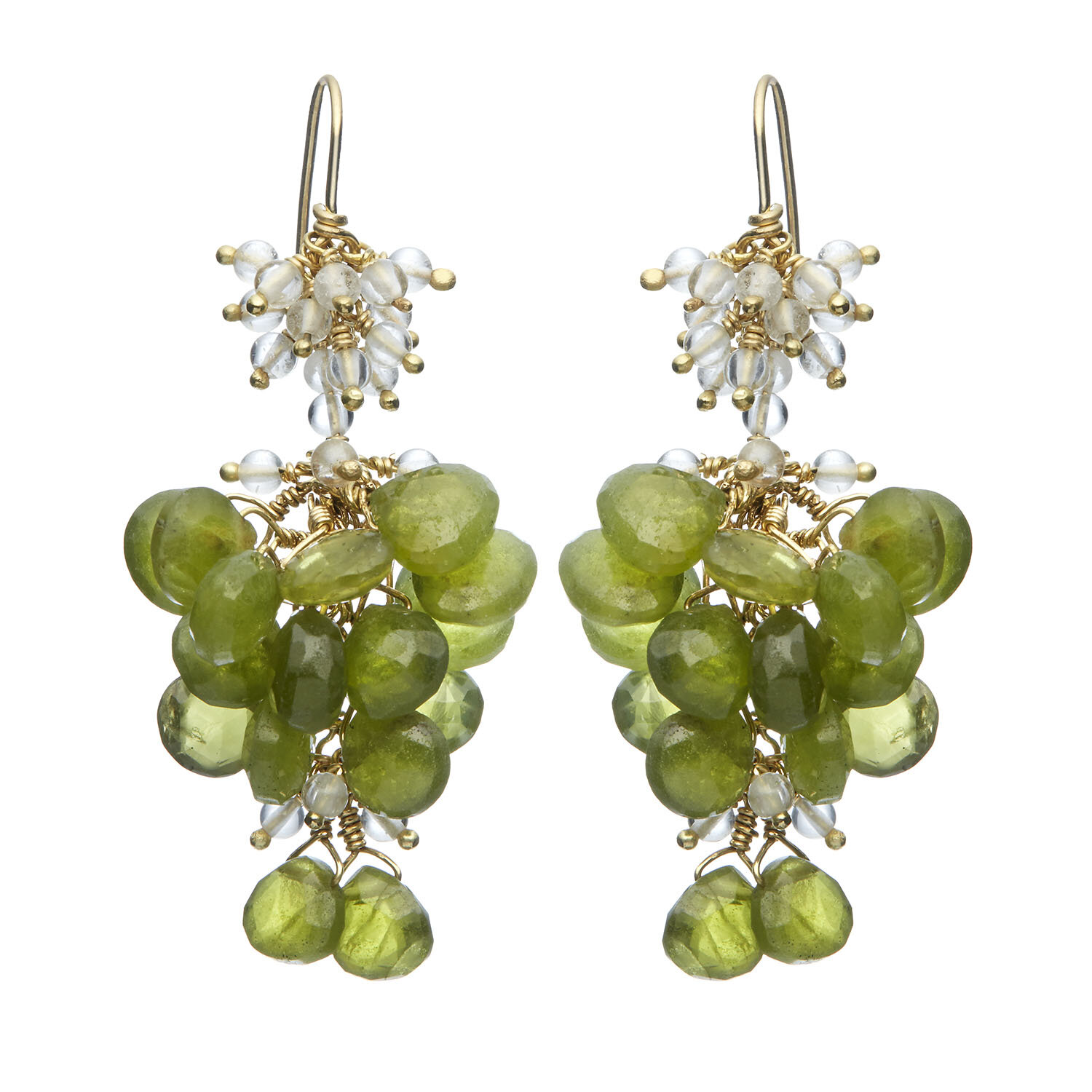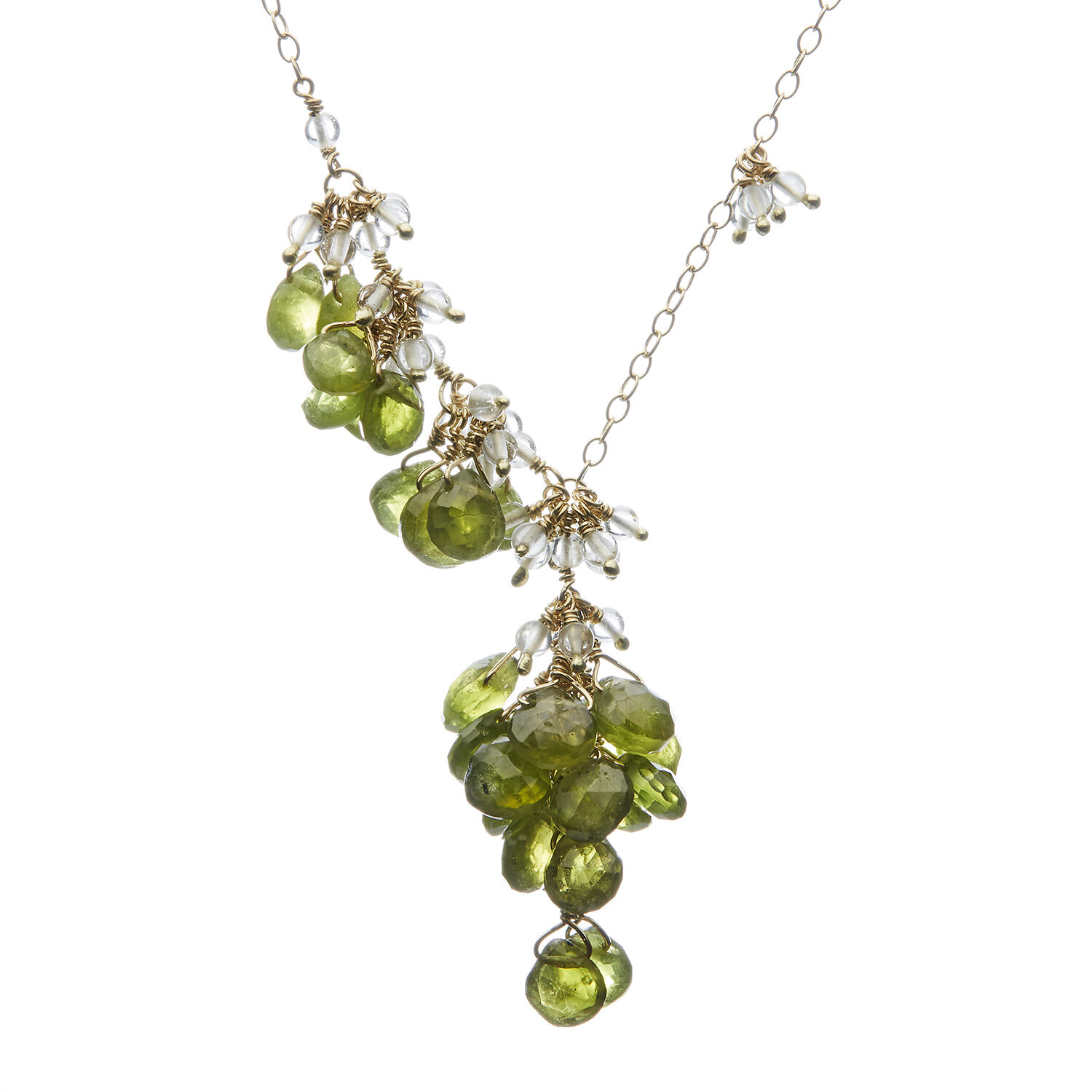Vesuvianite: A Stone of Transformation Told Through the Hands of a Jeweler
A stunning collection of natural vesuvianite beads in varying shades of green, showcasing the gem’s unique color depth and organic beauty. Perfect for crafting one-of-a-kind jewelry pieces. Photo credit: Michelle Pajak-Reynolds Studios
As a jewelry artist and metalsmith, I choose stones not just for their color or rarity, but for the story they carry. Vesuvianite—also known as idocrase—is one of those quiet, powerful gemstones that feels alive in my hands. It’s a stone of transformation, courage, and deep earth energy, with roots that reach back to volcanoes, ancient empires, and the ever-unfolding path of personal growth.
Whether I’m setting these velvety green gems in Fairmined gold or shimmering sterling silver, vesuvianite always brings a certain grounded magic to the piece. It’s a gem I return to again and again—especially for clients seeking jewelry that holds meaning, clarity, and movement forward.
A Storied Legacy: Vesuvianite’s Origins
The name vesuvianite comes from Mount Vesuvius in Italy, where German geologist Abraham Gottlob Werner first identified the stone in 1795 after discovering gem-quality crystals embedded in volcanic rock. One year later, French mineralogist René Just Haüy offered a second name—idocrase, from the Greek idos (form) and krasis (mixture), noting its visual resemblance to other gems like jade, zircon, peridot, and garnet.
Even today, the gem’s dual identity persists: "Vesuvianite" is favored in jewelry and gemological circles, while "idocrase" is often used by mineral collectors and within the crystal healing community. To me, both names feel right—it is a gem of duality, after all: structured yet fluid, ancient yet ever-evolving.
Vesuvianite’s Symbolism and Meaning in Jewelry
In the studio, I see vesuvianite as a threshold stone—perfect for pieces that mark life’s turning points. Ancient Greeks and Romans wore it as a protective amulet, and that lineage continues. Today, many believe vesuvianite supports:
Letting go of old habits that no longer serve you
Aligning with your true path and purpose
Cultivating courage to embrace change
Drawing in abundance and creative flow
During meditation or intention-setting, vesuvianite is said to help integrate body, mind, and spirit—something I try to mirror in my design process: fusing material, narrative, and emotion into one form.
Disclaimer: Metaphysical properties are shared for inspiration and education, not as a substitute for medical advice.
Earth meets elegance in the one-of-a-kind Pellia Bracelet from Michelle Pajak-Reynolds’s Voyageuse Collection. Faceted vesuvianite beads shimmer against oxidized sterling silver and recycled 18k gold, offering a rich, textural expression of natural beauty and contrast. Hand-forged. Ethically made. Quietly powerful. Photo credit: Julie Stanley/JuleImages
A Painter’s Palette of Earthly Colors
What draws me most to vesuvianite—beyond its story—is its breathtaking natural color. It comes in a spectrum of my favorite green shades, from soft yellow-green to deep olive and forest tones. Vesuviante is also found in rich browns, honeyed golds, and—on rare, magical occasions—lilac and blue stones that shimmer with otherworldly light.
Some vesuvianite crystals even display multicolored bands or inclusions of white, rust-red, or yellow—details I find fascinating.
Natural, Untreated Beauty
One of vesuvianite’s rarest qualities in today's gem market? It’s almost always untreated. No heat enhancements, no dye—just pure, untouched color straight from the earth. As a metalsmith who values integrity in materials, this matters deeply to me. What you see is what nature intended.
Where Vesuvianite Is Found
Gem-quality vesuvianite is mined in select regions around the world, including:
North America: United States (Maine, New York, Vermont, Arkansas, New Hampshire), Canada
Europe: Italy, Switzerland, Finland, Russia, Norway
Africa: Kenya, Tanzania, Ethiopia
Asia & Central America: Japan, Mexico
Each origin has its own subtle variation in hue and structure. I often seek out ethically sourced vesuvianite in small parcels, letting the stones guide the design.
How to Care for Vesuvianite Jewelry
Like many expressive gemstones, vesuvianite is strong but not indestructible. It ranks 6.5 on the Mohs Scale of Hardness, making it suitable for everyday wear—but with care.
Cleaning Tips from My Bench:
Soak gently in lukewarm water with a few drops of mild soap
Use a soft toothbrush to clean around settings
Rinse and pat dry with a lint-free cloth
Storage Notes:
Store vesuvianite separately from harder gems (like diamonds or sapphires) to prevent scratching
Avoid contact with softer stones (like pearls and opals) to keep both pieces protected
Use a padded pouch or lined jewelry box to minimize wear over time
I always recommend removing vesuvianite jewelry before heavy physical work or exposure to harsh chemicals—out of respect for the delicate strength it offers.
A glimpse into the making of the Nularia Earrings—where olive moss-toned vesuvianite and luminous rock crystal come to life on the bench. Inspired by forest floors and wild growth, each element is carefully hand-set in recycled 18k gold, capturing nature’s raw elegance in progress. Photo credit: Michelle Pajak-Reynolds Studios
Why I Create with Vesuvianite
Some stones dazzle on first sight—others unfold their beauty over time. Vesuvianite does both. It has a steady, ancient quality that reveals new depths each time I work with it. Whether I’m designing for a celebration, a farewell, or a new beginning, vesuvianite becomes part of the wearer’s personal mythology.
It’s more than just a beautiful gem—it’s a companion on the path of becoming.
Vesuvianite Jewelry
Metaphysical & Historical Notes
All symbolic, metaphysical, and cultural associations are shared for educational and inspirational purposes. Michelle Pajak-Reynolds Studios LLC does not claim any medical or healing outcomes. Please consult a healthcare provider for medical concerns.







